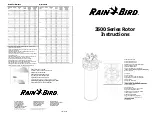
2
Functional Description
Mass Spectrometer
Thermo Scientific
TSQ Quantum XLS and TSQ Quantum GC User Guide
27
Figure 14.
Ion source of the TSQ Quantum GC
The ion volume, located in the center of the ion source, is the site where electrons interact
with sample or reagent gas molecules to form ions. Three exchangeable ion volumes and
ion volume holders are available for use in the ion source. See
. The choice of ion
volume depends on the ionization mode. The open EI ion volume is open on the analyzer
end, with a relatively large electron entrance hole. The closed EI ion volume has a smaller ion
exit hole than the EI ion volume. This results in a higher pressure of analyte, and greater
sensitivity, but less dynamic range. The CI ion volume is closed on the analyzer end, except
for a small ion exit hole and a relatively small electron entrance hole. In the CI mode it is
important to maintain a relatively high reagent gas pressure.
The ion source block holds the ion volume in its center. Samples are introduced from the
GC capillary column through an aperture on the side of the ion source block and then into
the ion volume. Gases for calibration or chemical ionization enter the ion volume through a
gas inlet tube.
Magnets and
magnet yoke
Filament
EI/CI Source
PCB
Heater ring
Ion source
block
L1, L2, L3, and L4 lens
assembly
















































